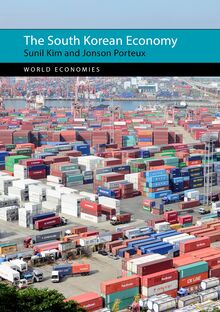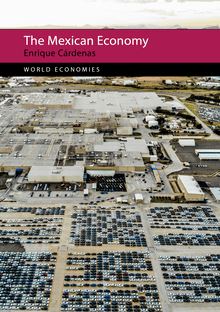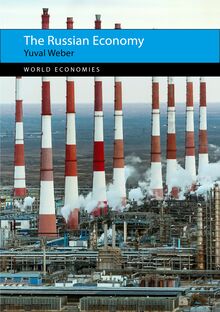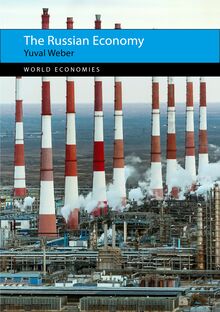-
 Univers
Univers
-
 Ebooks
Ebooks
-
 Livres audio
Livres audio
-
 Presse
Presse
-
 Podcasts
Podcasts
-
 BD
BD
-
 Documents
Documents
-
- Cours
- Révisions
- Ressources pédagogiques
- Sciences de l’éducation
- Manuels scolaires
- Langues
- Travaux de classe
- Annales de BEP
- Etudes supérieures
- Maternelle et primaire
- Fiches de lecture
- Orientation scolaire
- Méthodologie
- Corrigés de devoir
- Annales d’examens et concours
- Annales du bac
- Annales du brevet
- Rapports de stage
La lecture à portée de main
Vous pourrez modifier la taille du texte de cet ouvrage
Découvre YouScribe en t'inscrivant gratuitement
Je m'inscrisDécouvre YouScribe en t'inscrivant gratuitement
Je m'inscrisEn savoir plus
Vous pourrez modifier la taille du texte de cet ouvrage
En savoir plus

Description
Mexico is the sixteenth largest economy in the world and Latin America’s biggest exporter and importer. Despite the country’s relative macroeconomic stability, there are two Mexicos: one more prosperous, advanced and modern, the other poor, isolated and disadvantaged, and this polarization characterizes much of the country’s recent economic development.
Enrique Cárdenas provides a concise survey of Mexico’s recent economic history and examines its attempts to address the economic challenges thrown up by regional disparities, low productivity and an export-fuelled economy overwhelmingly dependent on demand from its largest neighbour. The book investigates the relative robustness of the macroeconomic fundamentals alongside specific industry-level economic trends, especially those sectors dependent on free trade agreements. Demographic trends, in particular migration to the north, urbanization, poor labour relations, organized crime and entrenched corruption are all shown to have impacted the economic path Mexico has taken.
The book offers an up-to-date analysis of Mexico’s economic development, social reform programmes and political economy suitable for a range of courses in Latin American studies and development studies.
1. Introducing the Mexican economy
2. The making of modern Mexico
3. The evolution and shape of development
4. Major components of the modern economy
5. A diverse society
6. Mexico’s uniquenesss
7. Prospects
Sujets
Informations
| Publié par | Agenda Publishing |
| Date de parution | 20 octobre 2022 |
| Nombre de lectures | 0 |
| EAN13 | 9781788215459 |
| Langue | English |
| Poids de l'ouvrage | 2 Mo |
Informations légales : prix de location à la page 0,1500€. Cette information est donnée uniquement à titre indicatif conformément à la législation en vigueur.
Extrait
WORLD ECONOMIES
A series of concise modern economic histories of the world’s most important national economies. Each book explains how a country’s economy works, why it has the shape it has, and what distinct challenges it faces. Alongside discussion of familiar indicators of economic growth, the coverage extends to well-being, inequality and corruption, to provide a fresh and more rounded understanding of the wealth of nations.
PUBLISHED
Stephen L. Morgan
THE CHINESE ECONOMY
Matthew Gray
THE ECONOMY OF THE GULF STATES
Frances M. B. Lynch
THE FRENCH ECONOMY
Matthew McCartney
THE INDIAN ECONOMY
Vera Zamagni
THE ITALIAN ECONOMY
Hiroaki Richard Watanabe
THE JAPANESE ECONOMY
Enrique Cárdenas
THE MEXICAN ECONOMY
Sunil Kim and Jonson Porteux
THE SOUTH KOREAN ECONOMY
© Enrique Cárdenas 2022
This book is copyright under the Berne Convention.
No reproduction without permission.
All rights reserved.
First edition published in 2022 by Agenda Publishing
Agenda Publishing Limited
The Core
Bath Lane
Newcastle Helix
Newcastle upon Tyne
NE4 5TF
www.agendapub.com
ISBN 978-1-78821-266-3 (hardcover)
ISBN 978-1-78821-267-0 (paperback)
British Library Cataloguing-in-Publication Data A catalogue record for this book is available from the British Library
Typeset by Patty Rennie
Printed and bound in the UK by CPI Group (UK) Ltd, Croydon, CR0 4YY
Contents
Preface
List of tables and figures
Map
1. INTRODUCING THE MEXICAN ECONOMY
2. THE MAKING OF MODERN MEXICO
3. THE EVOLUTION AND SHAPE OF DEVELOPMENT
4. MAJOR COMPONENTS OF THE CONTEMPORARY ECONOMY
5. HUMAN FACTORS
6. MEXICO’S UNIQUENESS
7. CONCLUSION
Notes
References
Index
Preface
This book is part of the World Economies series, which provides country histories of the most important economies of the world. Mexico, today’s sixteenth largest economy, showed a remarkable growth path since the Great Depression to the oil boom of the 1970s, as GDP increased on average 5 per cent each year. Then came the debt crisis, profound economic restructuring, and a fairly stable low growth rate of approximately 2 per cent per year on average until the present day. Thus, the gap between Mexico and the most developed countries, and with the most prosperous emerging markets, has widened since the 1980s. The near future does not look promising.
The aim of this work is to show the factors that explain this economic path and it focuses on Mexico’s overall performance with a close look at the various institutions, groups, entities and actors that have shaped Mexico’s development since the 1940s. As with other nations, it is not possible to speak of a continuum, across the country, given its diverse geography and ethnic groups. Thus, regions and particular sectors are considered in detail only when it is necessary to understand the country’s path of development and its current situation. The approach adopted also gives due consideration to political economy arguments that help explain historic major turning points and public decisions that have made a long-lasting impact. This is essential to understanding Mexico’s present and future. The periodization shown throughout the book is determined by those turning points that shape the topics of the various chapters. Although there is a coincidental path in several areas, not all reflect a homogeneous path of development, for example, public efforts to improve education does not necessarily match in time with efforts to increase health coverage.
The book provides a general understanding of the origins of Mexico’s recent economic development as well as its current structure, regional differences, social polarization, productivity gaps and the challenges ahead posed by the new government. It also examines the relative robustness of macroeconomic fundamentals that have shaped economic and social policy over the years, with disregard to ideological differences of various governments since the 1990s. Long-term economic trends at the sectoral level are important given the deep structural change that the economy has gone through since the 1990s, especially those intertwined with the export sector through the North American Free Trade Agreement (NAFTA) that came into effect in 1994 and its renewal in 2020. The book ends with thoughts on Mexico’s future path, given the current dramatic changes of the new government, which are reshaping economic growth and the country’s socioeconomic structure.
The political economy is closely related to Mexico’s overall economic performance and the socio-economic polarization that has widened in recent years. In many ways, there are two Mexicos: one in the north, more prosperous, advanced, and modern that shares the border with the United States, and the other in the south, poor, isolated, and backward. The capital, Mexico City, a megalopolis of around 20 million inhabitants lies between these two Mexicos and shares its contradictions. To make Mexico one, unified and more balanced nation, is one of the biggest challenges that the political elite must face, needing a long-term vision, which in turn requires strong political leadership willing both to play the role and to find a new political compromise. And it also needs social awareness that such an endeavour will require some type of economic solidarity, like in the case of German reunification after the fall of the Berlin Wall. Society, on the other hand, is disenchanted with the political class. Like in many other countries, people demand greater participation and a major transformation of the political elite: one that is keen to serve the people rather than serving itself.
Mexico is a complex, multicultural country with a Spanish colonial background. Its indigenous population was almost extinguished in the sixteenth century and since then there has been a full-fledged melange of ethnic groups. Such complexity appears in economic and social institutions and relationships, which continue to exhibit racism and discrimination today. In terms of public policy, since the 1990s, much attention has been given to specific vulnerable groups and illustrate the state’s (unfruitful) efforts to eradicate extreme poverty and reduce inequality.
The book has seven chapters. Chapter 1 provides a brief historical background from Independence (1810) to the Great Depression of 1930s. The origins of the Mexican nation are presented, which are closely related to the realities of the last years of the colonial period, which have had a lasting impact on the Mexican economy and society. The long nineteenth century, spanning from the 1820s to the Mexican Revolution of the 1910s, may be divided into three key periods: the aftermath of the War of Independence characterized by political turmoil and economic stagnation which resulted in foreign invasions and loss of territory; the Porfirian period of the last third of the nineteenth century which experienced relative economic prosperity but social polarization; and the Mexican Revolution and its short-term consequences. The chapter ends with the impact of the global depression of the 1930s.
Chapter 2 presents a balanced overview of Mexico’s economic development, establishing the various phases that occurred. The four-part periodization proposed is based on significant turning points in the Mexican economy and/or society, sometimes provoked by external forces. We consider first, the period after the Second World War until the late 1960s defined by the strategy of import substitution industrialization. Secondly, when the shortcomings of the model appear, and its continuation was only made possible by the oil boom of the 1970s. Thirdly we consider the debt crisis of the 1980s, which prompted a change in direction and restructuring. The economy started to open and major market-oriented reforms began to take shape, among them, the signing of NAFTA. That process was reinforced after 2012, when some reforms were taken a step forward, albeit with some unwanted consequences in terms of slow growth and economic polarization. Finally, the chapter considers the first years of Mexico’s new government that has taken some major steps towards reversing several reforms and modifying the socioeconomic structure.
The following chapters follow a different logic. They deal with various issues indispensable to better understand Mexico today, and are not necessarily chronological. The rationale behind this structure is the relevance of the issues analysed, considering a time structure that best suits each issue in turn. Thus, Chapter 3 focuses on a quantitative analysis of the economy and its major sectors and regions. Of vital importance is the demographic transition, the permanence of slow growth from the 1982 debt crisis onwards, migration to the US, and regional polarization. The impact of NAFTA is analysed, as the share of foreign trade to GDP jumped to historical heights, much higher than anything seen in Latin America to this day.
Chapter 4 examines how the economy is structured, the major public institutions that affect economic activity and performance, how the private sector is organized and represented in public policy decisions, and considers other powerful groups like major unions and the media. The process of institution modernization is also considered, as well as more recent policy changes that have reversed some of the most important changes since the beginning of the twenty-first century.
Chapter 5 deals with social groups and their characteristics. Poverty and inequality have been at the centre of public debate and policy in Mexico. In fact, the current government made it a major campaign promise and has modified a number of social programmes to that end, with uncertain results. Gender as well as ethnic discrimination are also important issues that impact social cohesion. Migration to the US almost stopped in the 2010s and faced drastic reversals under Trump’s administration and this h
-
 Univers
Univers
-
 Ebooks
Ebooks
-
 Livres audio
Livres audio
-
 Presse
Presse
-
 Podcasts
Podcasts
-
 BD
BD
-
 Documents
Documents
-
Jeunesse
-
Littérature
-
Ressources professionnelles
-
Santé et bien-être
-
Savoirs
-
Education
-
Loisirs et hobbies
-
Art, musique et cinéma
-
Actualité et débat de société
-
Jeunesse
-
Littérature
-
Ressources professionnelles
-
Santé et bien-être
-
Savoirs
-
Education
-
Loisirs et hobbies
-
Art, musique et cinéma
-
Actualité et débat de société
-
Actualités
-
Lifestyle
-
Presse jeunesse
-
Presse professionnelle
-
Pratique
-
Presse sportive
-
Presse internationale
-
Culture & Médias
-
Action et Aventures
-
Science-fiction et Fantasy
-
Société
-
Jeunesse
-
Littérature
-
Ressources professionnelles
-
Santé et bien-être
-
Savoirs
-
Education
-
Loisirs et hobbies
-
Art, musique et cinéma
-
Actualité et débat de société
- Cours
- Révisions
- Ressources pédagogiques
- Sciences de l’éducation
- Manuels scolaires
- Langues
- Travaux de classe
- Annales de BEP
- Etudes supérieures
- Maternelle et primaire
- Fiches de lecture
- Orientation scolaire
- Méthodologie
- Corrigés de devoir
- Annales d’examens et concours
- Annales du bac
- Annales du brevet
- Rapports de stage










